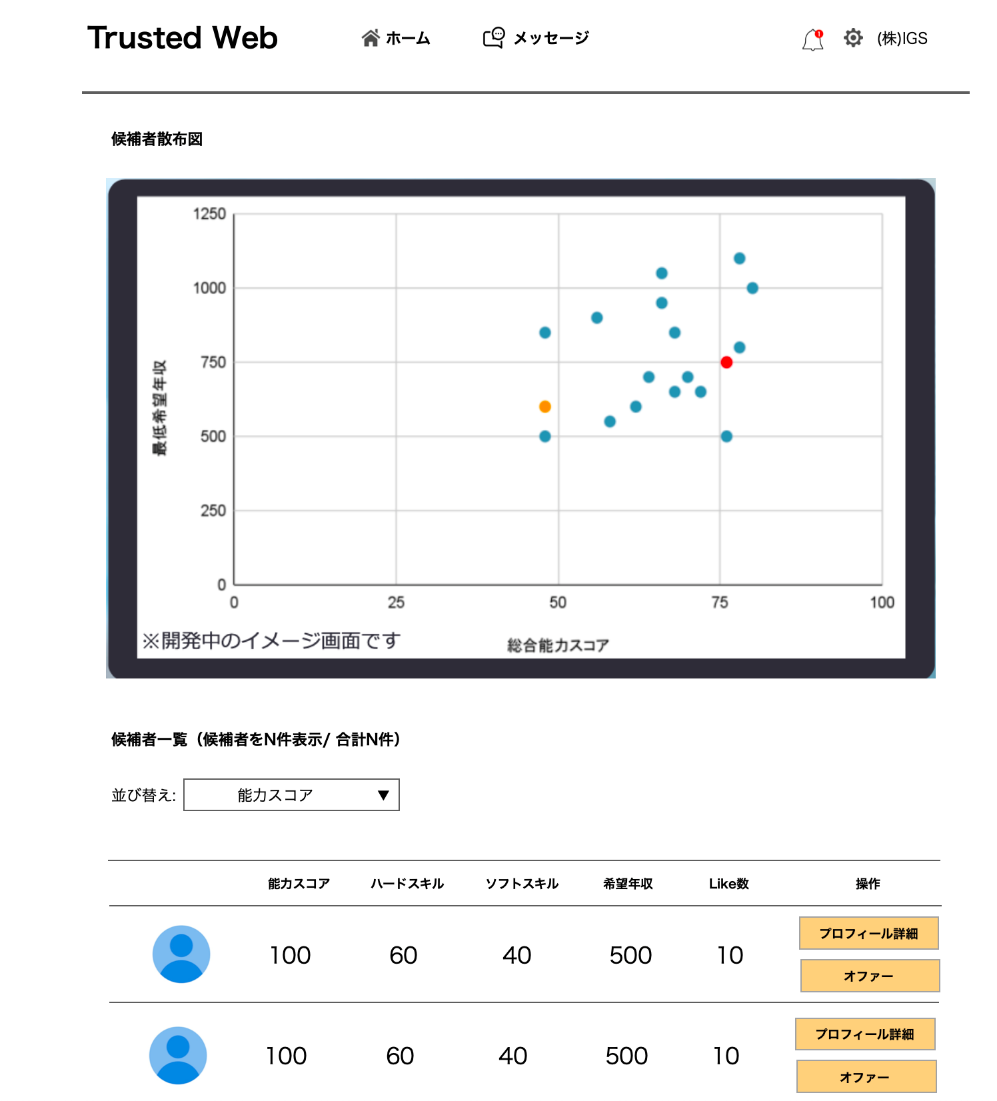Building a trust network to expand global education and labor market mobility
2024/06/10Use Cases

This page shows the "Building a Network of Trust to Expand International Education and Increase Labor Market Mobility ~Creating a world where people can learn and expand their own potential without financial issues~" exploried and tested by Institution for a Global Society Corporation, in the 2023 "Use Case Demonstration Project of the Trusted Web".
Please click on the links at the bottom of this page to learn more about the details of the demonstration.
Current issues and What Trusted Web Solves
Current Issues (Pain Points)
- Difficult to confirm that education is being provided in accordance with labor market requirements.
- Unclear security management of personal information and difficulty in centralized management of learning data.
- Management of personal information is complicated, and data acquisition of overseas human resources requires compliance with personal information protection regulations.
- As international matching of human resources progresses and each country defines different personal information protection regulations, it is difficult to ensure substantial compliance.

What Trusted Web Will Solve
- Implement a system that enables the sharing of personal competence data worldwide while keeping learning data confidential, so that education can be provided according to market needs.
- Establish a system that allows candidates to take charge of their own data management.
- Establish a system that enables matching of talent data in encrypted form to reduce unnecessary data management.
- Establish a system to encrypt personal data for international data transfer while complying with national privacy regulations.

Data to be verified

Verification Points
- Create 8 levels of skill data based on ESCO standards, which are increasingly utilized internationally.
- Calculate the talent’s skill data by multiplying encrypted learning data and its weight for each via secure computation.
- Store divided and encrypted learning date in BC and RDB to ensure its authenticity and the talent’s right of deleting it.
Business and Operational Validation (including UX/UI)
The following are the particular aspects that were focused on in PoC.
- What abilities should employers expect from job talents?
- How should a smooth UX/UI be designed for recruiters, especially when hiring international talents?
- How should the matching of talents with employers be achieved while keeping their learning data confidential?
- How can talents control their own data such as disclosing and deleting their learning data without relying on the platform?
Main Achievements
The main results from the PoC are as follows.
- Developed a secure architecture where only job seekers manage keys for their data, preventing unauthorized decryption.
- Employed lattice cryptography for encrypting learning data and company weights, ensuring quantum-resistant operations in Lattigo with the CKKS scheme.
- Created a scatter plot for efficient matching, with talents' desired salaries and encrypted skill data calculated via secret computation.
- Designed a system for personal data management using distributed technology, allowing data encryption and storage split between blockchain and databases.
- Received feedback from companies on courses for Vietnamese students and skill data, noting some gaps in information for hiring.
Documents
To communicate with Trusted Web stakeholders,
please use the contact form.